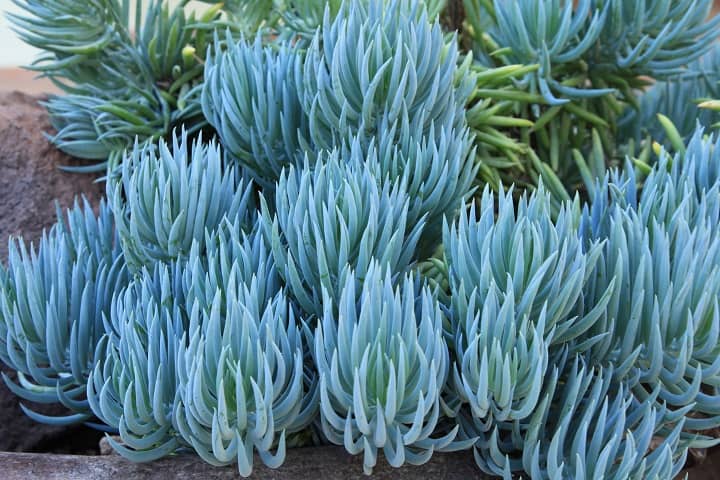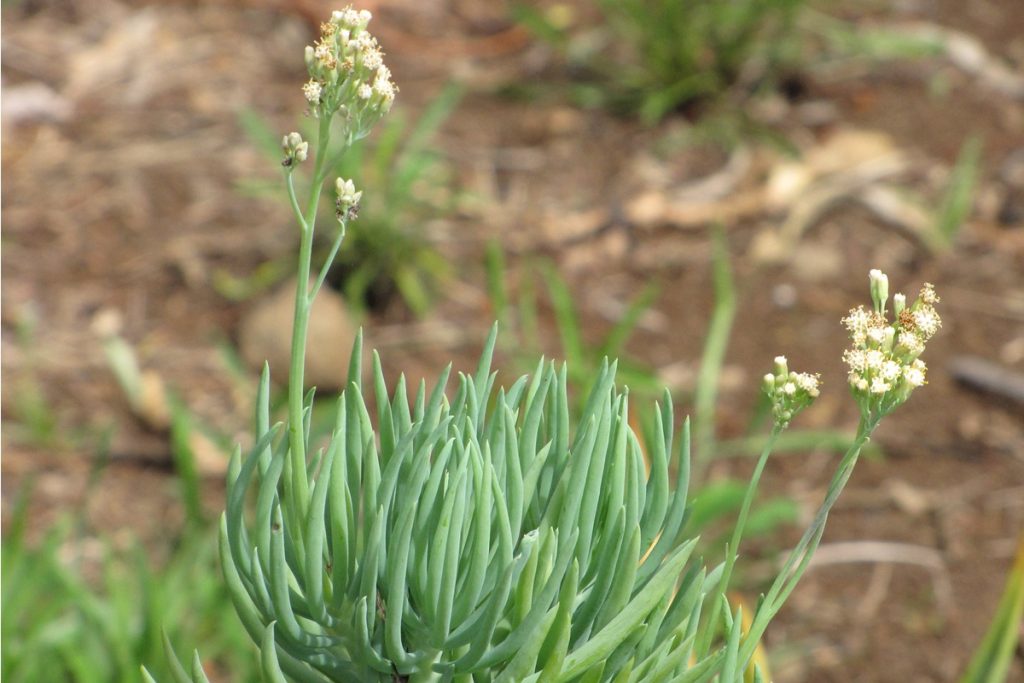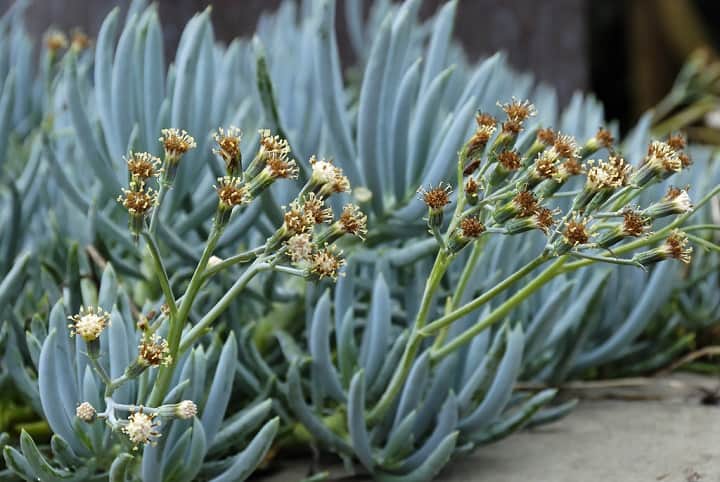Blue Chalk Sticks Propagation & Care Guide
Have you ever wanted to add a splash of vibrant color to your garden? Well, look no further than the amazing blue chalk sticks succulent! In this article, we’ll break down everything you need to know about blue chalk sticks, from how to plant and care for them, to giving them a good old trim. Plus, we’ll explore the many ways you can incorporate these gorgeous plants into your landscaping. So, get ready to dive into the world of blue chalk sticks and get inspired to make your garden truly stand out!

Contents
Blue Chalk Sticks Propagation Guide
Let’s dive into the exciting process of propagating blue chalk sticks! Whether you choose to use a leaf or stem, we’ve got you covered. Here’s a simple step-by-step guide to get you started:
- Grab a leaf or stem that’s about 6 inches long. You don’t have to use rooting hormone, but if you want to give it a little boost, you can use it.
- Find a pot with soil specially made for cacti and succulents. This type of soil is perfect for your blue chalk sticks. Place the pot in an area where it gets some light, but not direct sunlight. They prefer the light to be filtered, like when it shines through a window shade.
- Now, make sure to keep the soil slightly moist, but be careful not to overwater it. Blue chalk sticks enjoy a drink, but soggy soil is a no-no.
- Be patient! In about 6 to 8 weeks, you should start to see some roots sprouting.
- Once your succulent has established some strong roots, you have a couple of options. You can either plant it in your outdoor garden where it can add a burst of color, or you can transfer it to a larger container if you prefer to keep it indoors.
Blue Chalk Sticks Care Guide

Get ready to take good care of your blue chalk sticks succulent (Senecio mandraliscae) with this handy care guide! Trust me, this plant is a showstopper with its stunning blue color. Let’s dive into the essential tips:
Watering Blue Chalk Sticks
Blue chalk sticks are tough cookies when it comes to handling drought, so they don’t need a lot of water. Overwatering can lead to some unwanted issues like root rot and pests, so be cautious!
Typically, watering once a week is sufficient. Just make sure the soil isn’t already damp before giving it a drink.
If you’re growing your blue chalk sticks in pots, allow the soil to dry out completely between watering. When you do water, let it flow out from the drain holes at the bottom of the pot.
During the winter, reduce watering and only provide enough to prevent your succulent from wilting. They don’t like being too soaked during the colder months.
Location and Soil
Blue chalk sticks thrive best in full sun, soaking up direct light for about 6 to 8 hours. They can tolerate some shade, but they won’t be as happy about it.
Beware of those chilly temperatures! Cold weather can harm or even kill your plant. To protect it, either bring it indoors or add a cozy layer of mulch around it.
Like all succulents, blue chalk sticks prefer well-drained soil that isn’t too rich in organic matter. They like to keep their roots comfy!
Fertilizing Blue Chalk Sticks
Give your blue chalk sticks a boost by fertilizing it 3 to 4 times during its growing season, which is from early spring to fall. But here’s a tip: use only half of the recommended dose when fertilizing.
Pruning Blue Chalk Sticks
To help shape your succulent and make it look nice and dense, you can prune it in late summer. Sure, it might look a little rough at first, but trust me, new shoots will soon sprout up and transform it into a beauty!
Don’t just toss away those pruned stem cuttings. They can be planted in the ground or containers, where they’ll take root and grow into new plants. Waste not, right?
One important thing to remember after pruning is to hold back on watering for a few days. This will prevent the formation of fungus, which is definitely not something we want to deal with.
Blue Chalk Sticks Problems
Oh no! It’s time to address some common problems that you may encounter while caring for your blue chalk sticks. Don’t worry, though – every plant faces some challenges along the way. By being aware of these issues and knowing how to tackle them, you’ll be well-equipped to keep your blue chalk sticks thriving. Let’s dive in:
- Overwatering Woes: Blue chalk sticks are tough succulents that can handle drought conditions, so they don’t need a lot of water. Overwatering can lead to root rot and cause serious harm to your plant. Remember to water them sparingly and allow the soil to dry out between waterings.
- Pest Predicaments: While blue chalk sticks are generally quite resilient, they may occasionally attract common pests like aphids or mealybugs. Keep an eye out for any signs of these critters, such as small insects or sticky residue on the leaves. If you spot them, try using natural pest control methods like spraying the affected areas with a mixture of water and dish soap or using neem oil.
- Sunburn Sensitivity: While blue chalk sticks thrive in full sun, intense and prolonged exposure to scorching sun rays can cause sunburn. This shows up as discoloration or browning of the leaves. To prevent this, provide some shade during the hottest parts of the day or in areas with extremely high temperatures.
- Frosty Frustrations: Blue chalk sticks are not fond of cold temperatures, especially frost. If you live in an area with frosty winters, it’s important to protect your precious succulent from freezing conditions. Consider bringing the plant indoors during the coldest months or covering it with a protective material like frost cloth or mulch.
- Propagation Predicament: While propagating blue chalk sticks can be an exciting adventure, it’s essential to be cautious with stem or leaf cuttings. Make sure to allow the cuttings to properly callus before planting them to prevent rotting. Additionally, be patient with the rooting process, as it may take several weeks for new roots to appear.
By being mindful of these potential problems and taking the necessary precautions, you can keep your blue chalk sticks happy and healthy. Remember, every gardening experience is a learning opportunity, and with a little knowledge and care, you’ll overcome any challenges that come your way. So don’t be discouraged – keep nurturing your beautiful blue chalk sticks and watch them flourish in your garden!
Blue Chalk Sticks vs Dwarf Blue Chalk Sticks
Get ready to meet the little sibling of the blue chalk sticks, the dwarf blue chalk sticks, scientifically known as Senecio serpens. This succulent is perfect for planters and pots, bringing a touch of charm to any space.

This little blue succulent may be small in size, but it sure knows how to steal the spotlight. Its foliage consists of short cylindrical stems that will captivate your attention. Typically, it grows to about 6-8 inches tall and can spread out to 1-2 feet wide. So where can you use the lovely Senecio serpens?
- Xeriscape gardens: This succulent is a fantastic addition to gardens created for conserving water. It can withstand dry conditions like a champ.
- Stone gardens: Want to create a stunning display of rocks and succulents? The dwarf blue chalk sticks will fit right in, adding a burst of color and texture.
- Mediterranean gardens: If you love the bright and lively vibes of Mediterranean-style gardens, incorporating this succulent will enhance the overall charm.
- Flowerpots and potscaping: Don’t have a large garden? No problem! You can still enjoy the beauty of Senecio serpens by planting it in pots on your patio or balcony. Let your creativity loose with potscaping, combining it with other delightful plants.
Taking Care of Dwarf Blue Chalk Sticks
The care for this beauty is similar to what we mentioned for Senecio mandraliscae above. It loves well-draining soil and basks in full sun. When exposed to ample sunlight and heat, you might notice the tips of the plant turning a lovely shade of purple.
So, whether you choose the blue chalk sticks or its little sibling, the dwarf blue chalk sticks, you can confidently care for them using the tips we’ve discussed earlier. Enjoy the wonder of these succulents and bring a touch of natural beauty to your surroundings!
